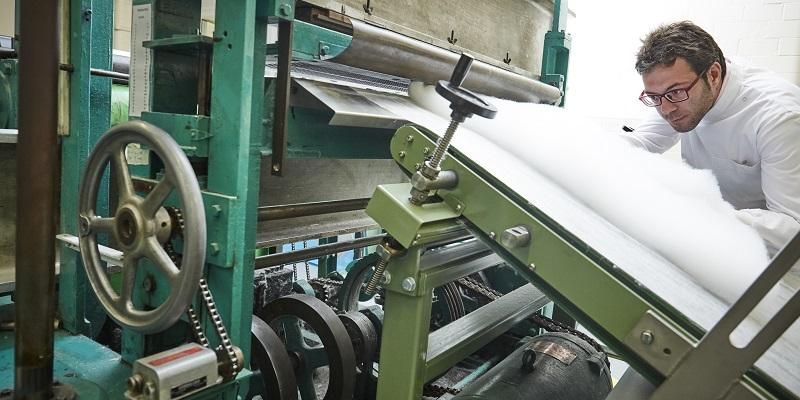Photoactive collagen-based materials for wound care

Chronic wounds are a major challenge for healthcare systems around the world. In the UK, the annual cost of caring for patients with chronic wounds is £5.3 billion and expected to continue to grow rapidly over the coming years.
One of the main reasons is that the rate that wounds are occurring is greater than the rate they are healing.
Collagen provides strength and improved healing time
We have been developing new clinical dressings made from collagen, which are customised to improve healing time in wounds. We have developed a new manufacturing process platform capable of delivering atelocollagen, a derivative of collagen which is low immunogenic.
It can be manufactured in a variety of dressing products while still retaining the triple helix structure that gives collagen its strength. The process involves attaching a photosensitive organic compound to lysine groups (amino acids) on the atelocollagen backbone, which spontaneously strengthens the material by crosslinking when exposed to UV or blue light.
A versatile material
This process means the collagen can be customised to enhance its strength, liquid absorption and degradation time according to clinical needs, either during the manufacturing process, or at the bedside.
We can produce variants with unusual property combinations, such as very high liquid absorption combined with high wet strength. Our patented platform can deliver the atelocollagen in a variety of forms – hydrogels, membranes, films, fibres, braids, surface coatings and nonwoven fabrics. These can be produced to precisely controlled dimensions while still being compliant with Good Manufacturing Practice.
Benefits and impact
These dressings have been found to accelerate wound healing in pre-clinical evaluations and animal models, equivalent to market-leading products.
We are also working with clinical partners to develop a new membrane for guided bone regeneration in periodontal surgery. We are also working towards the production of ‘stem cell bandages’, where we use collagen-based fabrics retain cells when wrapped around bone lesions to aid regeneration.